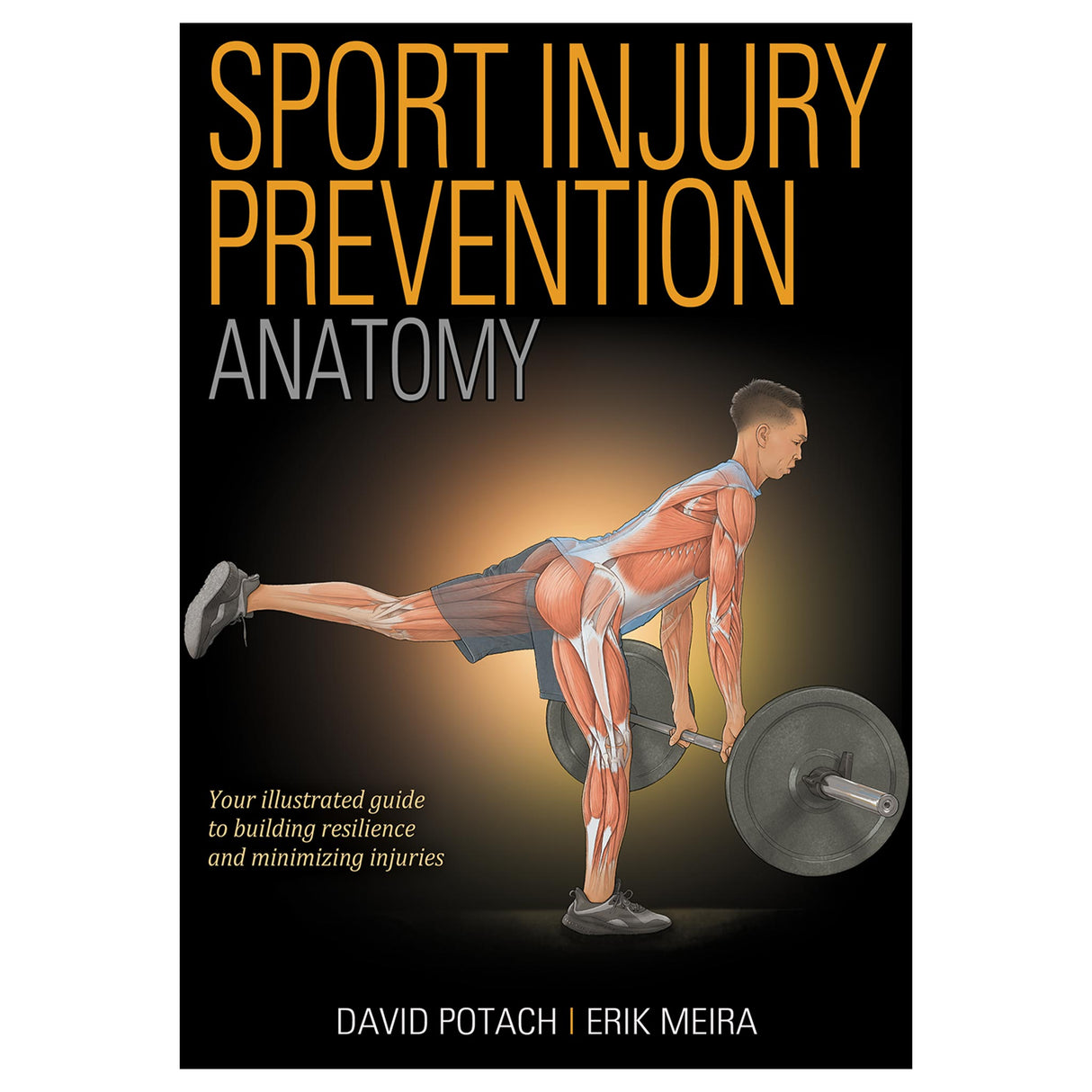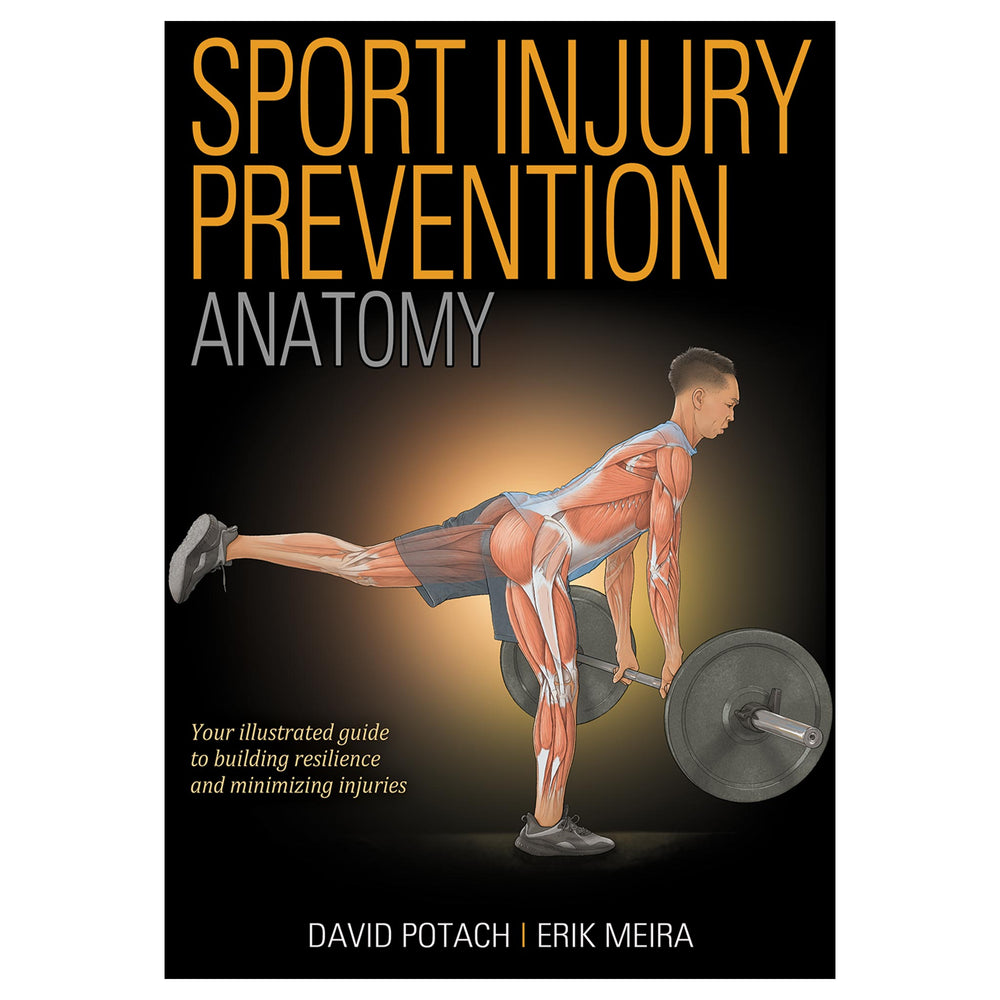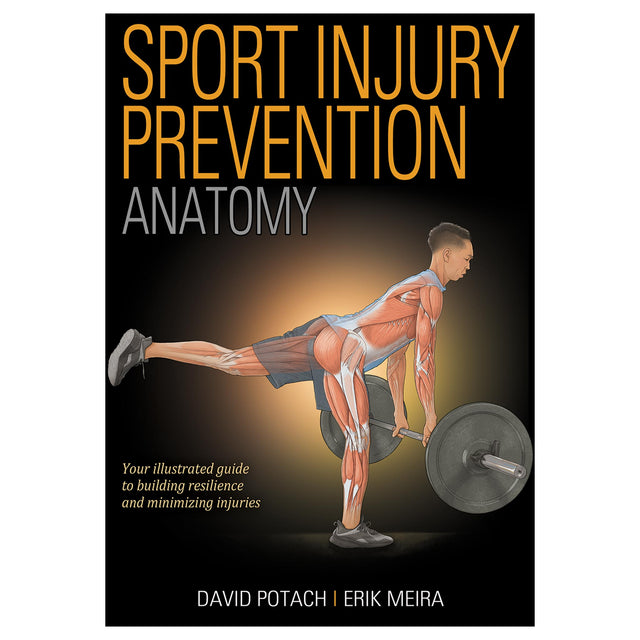Discover exercises proven to strengthen the body and keep injuries at bay.
Develop a body that can withstand the rigorous pressures of competitive sport and physical activity! Sport Injury Prevention Anatomy offers you a detailed look into some of the most common sport injury conditions and the best exercises to help prevent their occurrence.
Throughout the text, stunning full-color medical illustrations paired with the latest sport injury science guide you in reducing the likelihood of an injury before it happens.
Reduce the risk of common injuries like ACL tears, shoulder instability, concussions, and strains of the hamstring and low back. The book’s comprehensive coverage presents injuries by body segments—beginning with the head and neck and continuing all the way down through the lower leg and foot.
Sport Injury Prevention Anatomy helps you design your own exercise programs by exploring the key components of an injury prevention program: needs analysis, exercise selection, training frequency, timing, and intensity and volume. Focusing on resistance training as an ideal injury prevention method, you’ll find sample programming templates as well as advice on how to incorporate the various exercises into an existing training plan. You’ll also learn the important role the warm-up plays in injury prevention and discover methods to prime your body for optimal performance.
No one wants to be sidelined by injury. Sport Injury Prevention Anatomy provides you with the know-how to protect your body from damage and stay in competitive form.
Earn continuing education credits/units! A continuing education exam that uses this book is also available. It may be purchased separately or as part of a package that includes both the book and exam.
Audience
Serious athletes and coaches in a wide variety of sports as well as physical therapists, athletic trainers, strength and conditioning professionals, and personal trainers who work with athletes. Chapter 1. Understanding Sport Injuries
Chapter 2. Injury Prevention Exercise Principles
Chapter 3. Head, Neck, and Shoulders
Chapter 4. Elbows, Wrists, and Hands
Chapter 5. Spine and Trunk
Chapter 6. Hips
Chapter 7. Thighs
Chapter 8. Knees
Chapter 9. Legs, Ankles, and Feet
Chapter 10. Warm-Up for Injury Prevention
Chapter 11. Injury Prevention Program Design
David Potach, PT, SCS, CSCS, is the director of rehabilitation at Cheshire Medical Center in Keene, New Hampshire. In addition, he is the founder of the Injury Prevention Project, a nonprofit organization focused on providing low-cost injury prevention programming to athletes. He has been helping athletes reach their performance goals for over 30 years and has a passion for incorporating strength training and plyometric principles in rehabilitation settings and using those principles as a tool to reduce the risk of injury in sport. Potach previously served as a strength and conditioning coach at Creighton University, owned Omaha Sports Physical Therapy, and was director of sports rehab at Children's Hospital and Medical Center.
Potach has spoken internationally and regionally on strength training and conditioning, plyometrics, injury prevention, and sports rehabilitation. He has authored several articles on sports rehabilitation as well as textbook chapters on sports medicine and sports conditioning. In 2005, he became one of the first recipients to be awarded the National Strength and Conditioning Association (NSCA) Sports Medicine Professional of the Year award.
He is an ABPTS board-certified Sports Clinical Specialist and is recognized by the NSCA as a Certified Strength and Conditioning Specialist (CSCS). He was the cofounder of the NSCA's Sports Medicine Special Interest Group, was a longtime member of the NSCA's CSCS Exam Development Committee, and was a member of the ABPTS Sports Specialization Academy of Content Experts. He holds master of physical therapy and master of science degrees—both from the University of Nebraska—and a bachelor of arts degree in exercise science from Creighton University.
Erik P. Meira, PT, DPT, is currently the director of Physical Therapy Science Communication Group, a company based out of Portland, Oregon, that specializes in sports rehabilitation and education. He is also a clinical advisor to the University of Portland NCAA Division I program. He is an ABPTS board-certified Sports Clinical Specialist and is recognized by the NSCA as a Certified Strength and Conditioning Specialist (CSCS) with extensive experience in the management of sport injuries at many different levels. He is a frequent consultant for organizations within the NCAA, NBA, NFL, MLS, WNSL, and other elite sports leagues.
Dr. Meira has authored several articles and textbook chapters, and he lectures internationally, in settings that range from speaking to small teams in private settings to being the keynote speaker at large professional conferences. Known for his ability to make complex ideas simple to understand with a humorous delivery style, he covers topics such as hips, knees, exercise prescription, returning athletes to sport, science application, applied biomechanics, and physical therapy practice models. He was the founder and the original chair of the Hip Special Interest Group of the American Academy of Sports Physical Therapy (AASPT), served as their APTA Combined Sections Meeting (CSM) program chair, and was a member of the AASPT Executive Committee. He is also the cohost of PT Inquest, a podcast dedicated to understanding physical therapy science, and provides continuing education through The Science PT.
“Sport Injury Prevention Anatomy is an excellent resource that provides a foundation for the anatomy of movement and function. It presents anatomical structures in a common-sense format to prevent musculoskeletal injuries.”
—Kody Moffatt, MD, MS, FAAP, FACSM, Division Chief of Sports Medicine at Children’s Hospital & Medical Center
“In Sport Injury Prevention Anatomy, David and Erik have provided a science-based overview of common sport injuries and clearly articulated exercise interventions to reduce injury risk. They have successfully applied these concepts with their own patients, who range from recreational athletes to elite athletes.”
—Terry L. Grindstaff, PhD, PT, ATC









